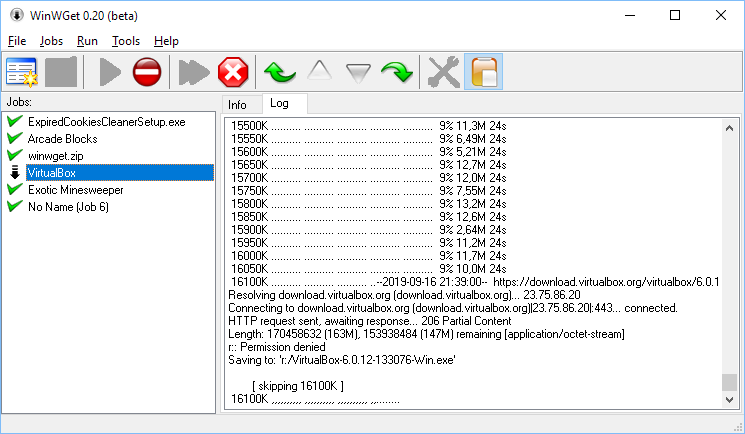

- #WGET FOR WINDOWS MAC OS#
- #WGET FOR WINDOWS FULL#
- #WGET FOR WINDOWS SERIES#
- #WGET FOR WINDOWS DOWNLOAD#
Or we could include a dictionary of header information with a -Headers option.
#WGET FOR WINDOWS MAC OS#
Use HomeBrew To Install Wget On Mac OS X. At this time the interface is available only for Windows OS. It will not make coffee for you It is expected from you to know what options you need, yet it comes with reasonable defaults.

It will keep track of your downloads - add, clone, edit, delete jobs.
#WGET FOR WINDOWS DOWNLOAD#
For example, the user agent we’re using can be sent with a -UserAgent or we could send session variables with -SessionVariable. Download Wget on Windows To install and configure wget for Windows: Download. WinWGet is a GUI (Graphical User Interface) for Wget.
#WGET FOR WINDOWS SERIES#
Iwr also comes with support for much of what we’d send to a curl as quoted header information and specific handlers to communicate with endpoints. Basically, when Windows first boots up, it will open a series of dialogue boxes, and one of these boxes will usually be a file menu.

A file on a public site being accessed from a newer server likely wouldn’t require either of those flags. The file we were accessing was on a Windows server in the domain that required authentication, so we used the default credentials. The above command used basic parsing as we were accessing a resource from an older server, although that wouldn’t be required for newer servers. In the above example, we used the -uri to identify the target resource and -OutFile to list the local location. myfile.txt -UseBasicParsing -UseDefaultCredentials That could be done with the following command: Let’s say there’s a file at and we want to download it to the working directory as simply myfile.txt. Using PowerShell to download files is a matter of knowing which cmdlets and. There’s an alias for it so it can be called as just iwr. Windows PowerShell and PowerShell comes with file-download capabilities.
#WGET FOR WINDOWS FULL#
Specify the full path of this input text file just as in when choosing a download folder along with the previous parameters.Powershell comes with a handy little cmdlet to download files from the internet called Invoke-WebRequest which is documented at. This is through the -i parameter.įirst, create a file with the links from where contents need to be downloaded. But in windows, we need to get and install wget manually. īatch downloading using an input file : wget can even parse for URLs from a file and then download from them automatically. The below example shows how files can be downloaded from Windows command prompt using wget. The destination folder where they will be saved is E:\Txdlds and the parameters specified include -c and –directory-prefix. Wget -c –directory-prefix=E:\Contents pathtofileorurl So to save contents to a folder named Contents, simply give the full path as : To save these to another path, use the directory-prefix with double dashes before it :

You can use it by installing the Windows Subsystem for Linux, that gives you Bash in the. Save downloaded files to specific folders :īy default, downloads are stored in Users\username\AppData\Local\VirtualStore\Program Files\GnuWin32\bin. wget is a Linux command to download files from a server, not malware. In some cases where specifying a https url shows error, use the –no-check-certificate option. Resume interrupted downloads : To resume downloads when interrupted, use the -c parameter : Go to your Downloads folder and copy the wget.exe file to C:/Windows/System32. There are commonly used options with wget which make it effective. First, open the link below in your web browser and download the latest version of Wget for Windows on your computer. To get an idea of available parameters that can be used with wget, type : If the remote server allows it, then the contents can be downloaded.


 0 kommentar(er)
0 kommentar(er)
